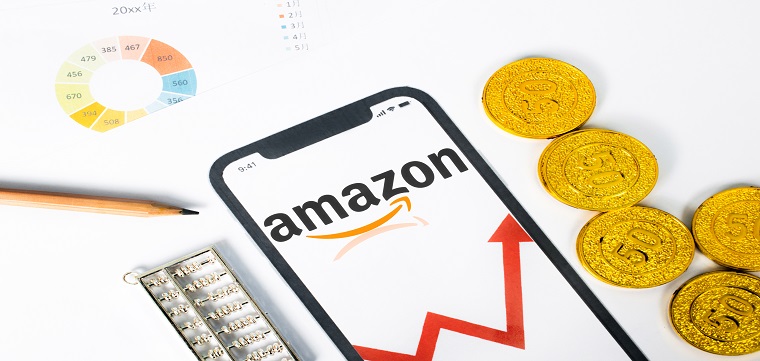After half a year, Amazon once again adjusted the FBA logistics delivery fee. The difference is that this adjustment is for sellers who meet the conditions of the lightweight product plan.
Amazon adjusts logistics delivery fee again
Amazon’s US station announced on June 30 that it will officially stop the small and light product program on August 29, 2023, and implement a more favorable standard FBA rate for low-priced products below $10, which makes sellers feel caught off guard.

The specific adjustments are as follows:
1. About the Small and Light program
From July 17, 2023, all new products on the US site will no longer be able to register for the program; and from August 29, Amazon will officially close the entire program, and at the same time the new low-priced FBA interest rate will be implemented.
2. About FBA logistics costs
If the product is registered in the Small and Light program and the price is less than 10 US dollars, their logistics fee will be paid about 0.30 US dollars more than the original plan, but they can enjoy the normal delivery time limit;
If the product has not been registered in the Small and Light program and the price is less than $10, the logistics fee will be reduced by about $0.77, and there will be no holiday peak delivery fee (applicable from October 15, 2023 to January 14, 2024), At the same time, it also enjoys the normal delivery time limit;
And if the product is not registered in the Small and Light program and the price is more than $10, Amazon will automatically apply the standard FBA rate and shipping speed.
Amazon stated that after August 29, 2023, products below $10 can automatically enjoy the new low-price FBA rate without additional operations by the seller. In addition, using the new standard FBA rates will allow sellers selling low-priced products to enjoy faster FBA delivery speeds, thereby increasing customer satisfaction.

However, after Amazon released the announcement, some sellers questioned that this adjustment is a good policy for low-priced products below $10, but more sellers are dissatisfied with it.
"Many people used to be stuck with the $12 threshold for the light and small plan. Now that the policy has been adjusted, it must not be lowered to less than $10?"
"This is to let the seller lower the price to grab market traffic."
"Scatter small seeds at the beginning of the year, and harvest large leeks in autumn."
Some sellers pointed out that the reason why Amazon lowered the threshold for enjoying the lower FBA rate to $10 is to compete with Temu, which is grabbing market traffic at low prices.
It has been observed that this adjustment has the greatest impact on sellers selling between $10 and $12, as they will face the dilemma of "balancing costs by raising prices" or "cutting prices to shrink profit margins and enjoy low rates" . In the current economic environment where consumption is downgraded, many sellers believe that sellers who choose the latter will account for the majority.
This seems to confirm the previous analysis of industry insiders: Although Amazon has not directly launched a price war with other platforms, it is trying to promote "low price involution" among sellers through policy adjustments.
Half a year later, Amazon once again adjusted the FBA logistics delivery fee. The difference is that this adjustment is aimed at sellers who meet the conditions of the lightweight product program.
Price war among Amazon sellers
This year is not the first time Amazon has adjusted FBA delivery fees. In fact, on January 17 this year, Amazon’s US station raised logistics and storage costs.
It is worth noting that in the FBA fee adjustment at the beginning of the year, Amazon raised the price threshold for products eligible for the lightweight product program from "$10 or less" to "$12 or less." Many sellers whose prices were close to or higher than $12 immediately adjusted their product prices below the threshold (such as adjusting to $11.99, etc.).
However, in less than half a year, Amazon took back this benefit and adjusted the product price threshold for enjoying the preferential FBA rate back to below $10. Many sellers expressed emotion, pointing out that Amazon seems to have gradually taken the initiative in the process of "inducing" sellers to keep reducing prices.
Previously, Amazon had announced that its price search algorithm would exclude Temu, meaning that prices for items that follow its fair pricing policy would not compete with Temu's prices. It seems that Amazon does not intend to participate in the low-price competition between various platforms, but judging from the recently updated functions, Amazon's price war against sellers has not stopped:
1. Modeled on Taobao's "More Like This" function
The editor mentioned in a previous article that Amazon has added a label similar to Taobao's "More Like This" (more similar products) to the pages of certain categories. For products with serious homogeneity, it is already inevitable to compare the price of the same model, and this move seems likely to further intensify the involution trend.
2. Open and transparent front-end sales data
Since March, the Amazon US station has successively displayed sales data and page views on the store homepage. The launch of this new feature points to a future where Amazon's data will be more transparent, which could have an impact on product click-through rates and further intensify the low-price involution war for data.
I recently learned that the US Federal Trade Commission (FTC) is preparing an antitrust lawsuit against Amazon. Given this high-pressure situation, Amazon may need to scale back its efforts to promote price wars within the platform.
I would very much like to hear what sellers think about this incident. Welcome to leave your comments in the comment area below, share your views and experiences, communicate and discuss with others.















